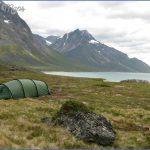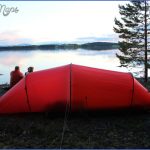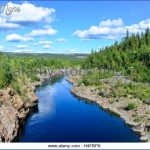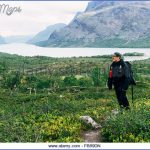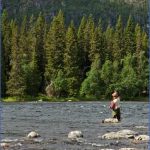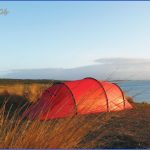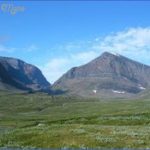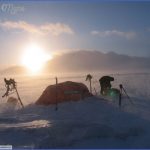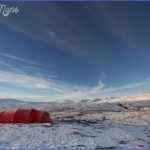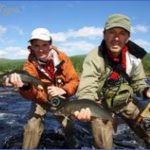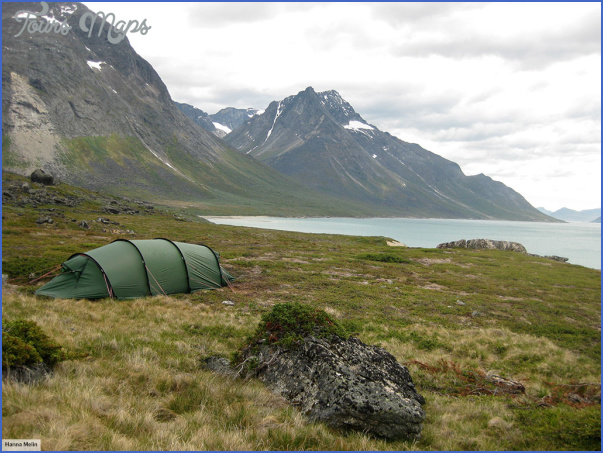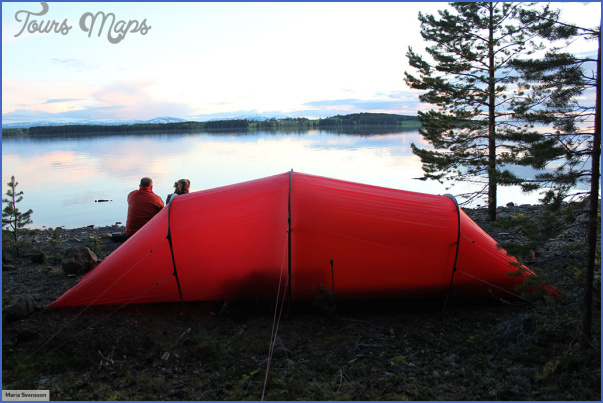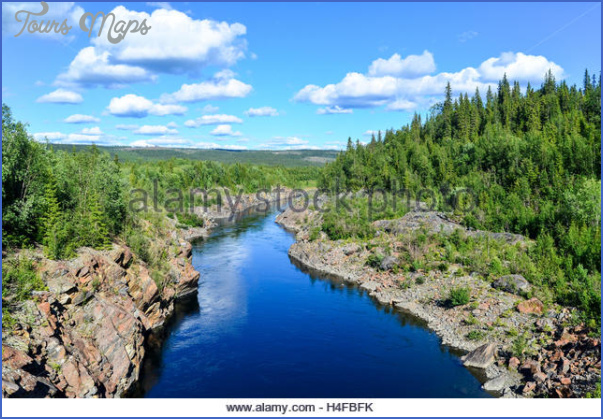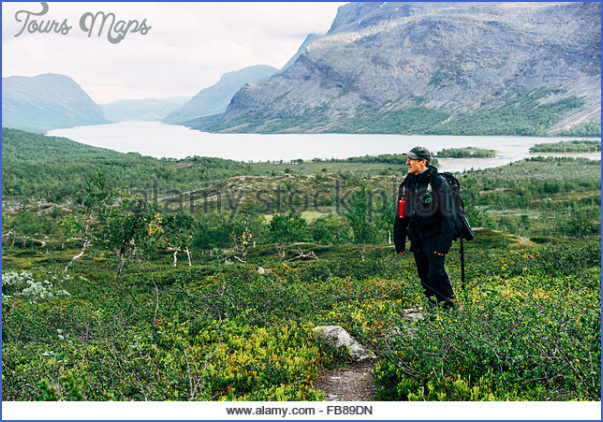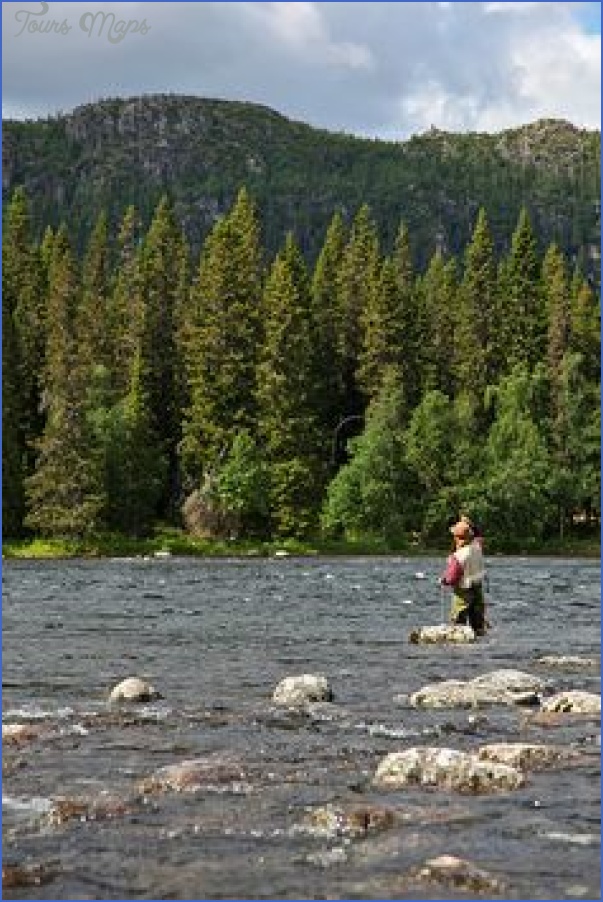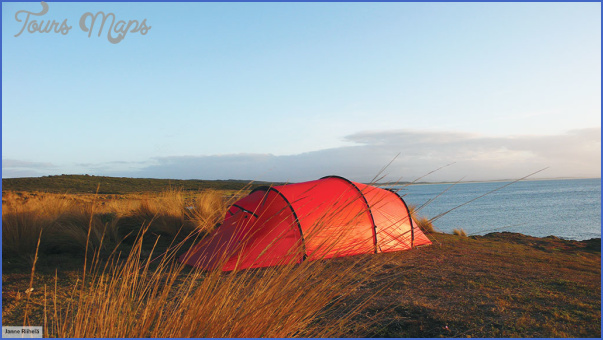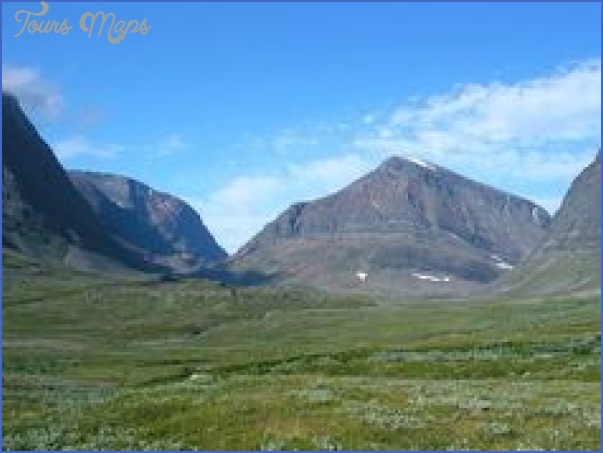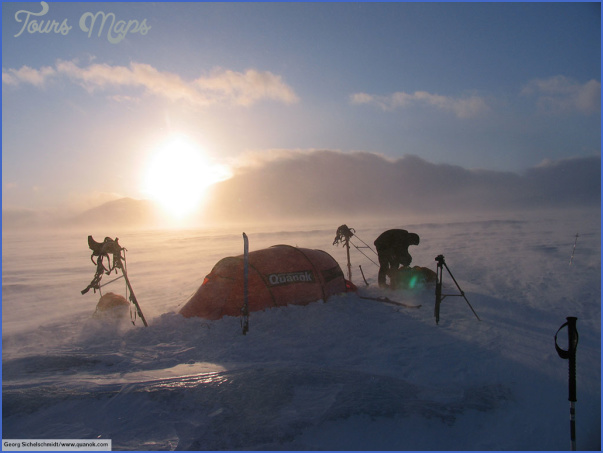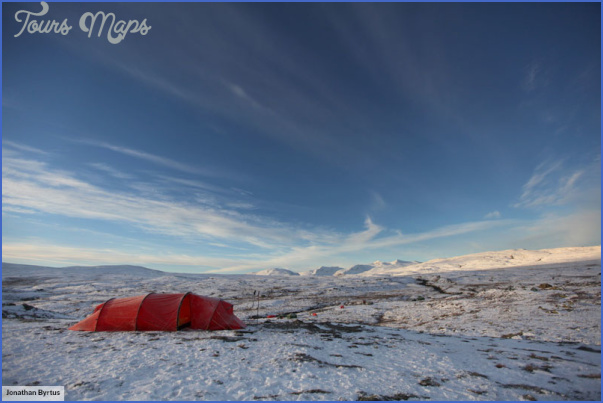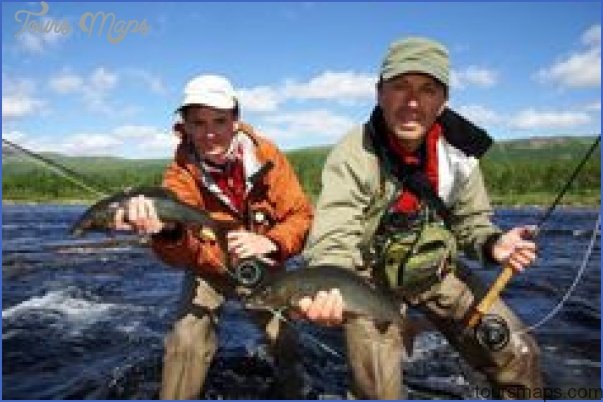These ore towns lie in the heart of Lapland. Here the coniferous forests have given place to expanses of open birch forestand great stretches of moorland and bog, with sluggish streams pursuing an uncertain course through the rubble and debris of the last Ice Age. Until quite recentlythis wasthedomain ofthe Lapps’ great herds of reindeer, but their possession of the territory is increasingly being disputed by the advance of modern civilisation.
From here it is possible to turn eastward into FINLAND. Like Norrland, this is a region of sublime austerity, and from any hill the summit of which rises above the surrounding forest there is an immense prospect of unspoiled natural beauty. The continually repeated but continually varied pattern of woodland and water, now clamorous with the sound ofthe wind and the rivers, now hushed to silence, reduces man to insignificance and humility and then lifts his heart with the radiance ofthe sun and the white splendour ofthe clouds chasing one another across the sky. Finland is called the land of a thousand lakes, but in reality there are many more than that; and surely nowhere on earth are woodland and water so intimately interwoven. The Finnish Lake Plateau slopes gradually down in a north-westerly direction to the Gulf of Bothnia; but there too the ground is stony and the rivers tumble their way down over outcrops of rock. The lakeland region, which seems to extend endlessly northwards, is much more sharply bounded on the south by the Salpausselka ridge. Beyond this are the most densely populated regions of Finland, in which farming is still the most rewarding occupation; and in the middle of this area, on a rocky promontory, is the capital, Helsinki.
After the Second World War Finland was compelled to cede considerable areas of its territory to the Soviet Union. In the southeast it lost Viipuri (Viborg) and the north-western shore of Lake Ladoga, and in the north the important port of Petsamo on the Arctic Ocean, which in spite of its northerly situation was, thanks to an arm of the Gulf Stream which warmed its waters, the only port in Finland which was ice-free throughout the year. Even worse from the Finnish point of view, Karelia, the most loved and most Finnish of all areas of Finland, now became part ofthe Soviet Union.
On the other hand the Finnish Aland Islands, at the entrance to the Gulf of Bothnia, have a Swedish-speaking population, and, as Finland was a Swedish province until 1814, there has always been a considerable Swedish element in the Finnish coastal towns, leading on occasion in the past to conflicts between the two races.
In spite of the obstacles created by nature, the interior of Finland is served by railways and good roads, for the industry and hard work of the Finns have opened up these inhospitable regions for the activities of man. Some 70% of the area of Finland is forest-covered, and just under 12% is accounted for by lakes, while more than 1440 rapids have been counted on the country’s rivers. The wealth of Finland lies in its forests and its never failing supply of water power; but the exploitation of these resources depends on constant and persistent effort. Only some 9% of the country’s area can be used for cultivation.
Lake Kaitum in northern Sweden Photo Gallery
Maybe You Like Them Too
- The Best Cities To Visit in The World
- World’s 10 Best Places To Visit
- Coolest Countries in the World to Visit
- Travel to Santorini, Greece
- Map of Barbados – Holiday in Barbados

